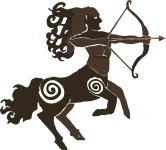Kroars
Well-known member
Hello All,
Hope the PedalPCB family is doing well. I recently came across some pcbs that don’t offer drill templates (Moone Electronics) and thought, rather than to draw/measure free hand, there’s got to be software (or something) available to do just that. I’m not great with computers, though I have a decent laptop. So, it would need to be very user friendly, preferably straight and to the point (not too in depth) just for making/saving drill templates. To give you an idea of my inadequate computer skills, I purchased a silhouette vinyl machine to make labels/small graphics for my pedals, although once I realized the in depth nature of the software required -I set it aside and haven’t used it once. There’s a couple hundred down the drain…. Well, I plan on figuring it out someday, but it seems one almost needs a degree in graphic design in order to take full advantage of the softwares offerings….
Anyway, back to drill templates. I don’t suppose anyone could point me in the correct direction to some software/app or so on that will be easy to use, and have the ability to create/save/printout various drill templates.
Thank you kindly!
Hope the PedalPCB family is doing well. I recently came across some pcbs that don’t offer drill templates (Moone Electronics) and thought, rather than to draw/measure free hand, there’s got to be software (or something) available to do just that. I’m not great with computers, though I have a decent laptop. So, it would need to be very user friendly, preferably straight and to the point (not too in depth) just for making/saving drill templates. To give you an idea of my inadequate computer skills, I purchased a silhouette vinyl machine to make labels/small graphics for my pedals, although once I realized the in depth nature of the software required -I set it aside and haven’t used it once. There’s a couple hundred down the drain…. Well, I plan on figuring it out someday, but it seems one almost needs a degree in graphic design in order to take full advantage of the softwares offerings….
Anyway, back to drill templates. I don’t suppose anyone could point me in the correct direction to some software/app or so on that will be easy to use, and have the ability to create/save/printout various drill templates.
Thank you kindly!






